- عنوان کتاب: STRONG FIELD PHYSICS -Ultra-Intense Light Interaction with Matter
- نویسنده: Todd Ditmire
- حوزه: فیزیک میدان
- سال انتشار: 2025
- تعداد صفحه: 869
- زبان اصلی: انگلیسی
- نوع فایل: pdf
- حجم فایل: 15.3 مگابایت
این کتاب به ارائه فیزیک بنیادیِ چگونگی برهمکنش نور فوقشدید با اشکال مختلف ماده میپردازد. این حوزه مطالعاتی اغلب با استفاده از اصطلاح ظریف فیزیک میدان قوی مورد اشاره قرار میگیرد. آنچه «شدت بالا» را تعریف میکند دقیق نیست، اما به طور کلی، رژیم میدان قوی با شدتی نزدیک به 1014 وات بر سانتیمتر مربع شروع میشود، همانطور که در فصل 1 بحث خواهم کرد. این موضوع، در زمان نگارش این مقاله، منجر به دو جایزه نوبل اخیر در فیزیک شده است، جایزه سال 2018 که به استریکلند و مورو برای تقویت پالس چیرپ داده شد، و جایزه سال 2023 که به لوئیلیه، آگوستینی و کراوس برای فیزیک پالس اتوثانیه اهدا شد. هدف من از نوشتن این کتاب (که اعتراف میکنم اکنون به یک کتاب قطور تبدیل شده است) با چیزی که احساس میکردم نیاز دانشمندانی است که وارد این حوزه میشوند (مانند دانشجویان تحصیلات تکمیلی جدید) به کتابی که سعی در پوشش جامع بیشتر فیزیک بنیادیِ زیربنایی فیزیک میدان قوی و آنچه هنگام تابش نور شدید به ماده اتفاق میافتد، انگیزه میدهد. نتیجه، که طی چندین سال نوشته شده است (سالهایی بیشتر از آنچه که باید طول میکشید و بیش از آنچه که من مایل به اعتراف آن هستم)، یک کتاب درسی است که امیدوارم خواننده آن را به عنوان مرجعی مهم در مورد گستره موضوعاتی که فیزیک میدان قوی را تشکیل میدهند، بیابد. در واقع، این حوزه وسعت جالبی دارد. از یک سو، بخش زیادی از فیزیک میدان قوی به اتمها و مولکولها مربوط میشود و به همین دلیل، تحقیقات در جامعه فیزیک نوری اتمی-مولکولی (AMO) دنبال میشود. اصطلاح “فیزیک میدان قوی” اغلب در زمینه تحقیقات AMO به کار میرود. با این حال، مطالعه برهمکنشهای لیزر-ماده با شدت بالا به ناچار در بسیاری از رژیمها به مطالعه برهمکنشها با پلاسماها تکامل مییابد، موضوعی که مورد توجه بسیاری از فیزیکدانان پلاسما در سراسر جهان است. این کتاب قصد دارد به طور مفصل به فیزیک مورد بررسی توسط هر دو جامعه AMO و فیزیک پلاسما بپردازد. در حالی که این زیرشاخهها اغلب با هم همپوشانی دارند، در بیشتر موارد دو حوزه تحقیقاتی نسبتاً متمایز را نشان میدهند. امیدوارم که این اثر برای دانشجویانی که در هر یک از این حوزههای مکمل تحصیل میکنند، مفید واقع شود و بتواند دانشجویان هر حوزه را در مورد نقشی که اثرات حوزه دیگر در پدیدههای نور با شدت بالا ایفا میکند، آگاه کند. بنابراین، اگرچه تعدادی کتاب درسی بسیار خوب وجود دارد که بر جنبه اتمی یا پلاسمایی برهمکنشهای نور-ماده با شدت بالا متمرکز شدهاند، تا آنجا که من میدانم، هیچ کتابی وجود ندارد که هر دو را به طور گسترده پوشش دهد. امید من این است که این کتاب تا حدی این شکاف را پر کند. نیت من از این کتاب همچنین ناشی از تعصب دیگری است که دارم. احساس من این است که با بالغ شدن یک زیرشاخه از فیزیک (یا هر علمی) نقطهای فرا میرسد که دانشجویان آن رشته باید بر انتشارات اخیر در آن حوزه تمرکز کنند و اگر نیاز داشته باشند که برای خواندن دهها نشریه بنیادی به ادبیات مراجعه کنند تا پیشینه لازم برای درک تحقیقات مدرن در آن حوزه را به دست آورند، میتوانند دچار سردرگمی شوند. دانشجویان در چنین حوزه بالغی از وجود کتابخانهای از کتابهای درسی بهرهمند میشوند که به آنها پایههایی برای درک یافتههای تحقیقات گذشته میدهد، بدون اینکه مجبور باشند به مقالات اصلی که آن پایهها را بنا نهادهاند، بپردازند. برای مثال، اگر من در انجام تحقیقات در مورد فناوریهای جدید لیزر مجبور باشم با انتشار اولین لیزر توسط میمن شروع کنم و از آنجا به سراغ ادبیات بروم، محکوم به شکست خواهم بود. من از گنجینهای از کتابهای درسی عالی فیزیک لیزر مانند کتاب زیگمن یا کتابهای میلونی و ابرلی برای تکیه بر آنها برخوردارم. فیزیک میدان قوی به آن مرحله از بلوغ و وسعت رسیده است. در حالی که اکنون چندین کتاب درسی عالی اخیر در مورد فیزیک برهمکنش لیزر-ماده با شدت بالا وجود دارد، احساس کردم هنوز جایی برای یک کتاب جامع که به بررسی مطالب بنیادی گسترده برای تکمیل سایر کتابهای درسی اختصاص داده شده باشد، وجود دارد. امیدوارم خواننده دریابد که این کتاب ابزار مهمی در زرادخانه خود در این موضوع ایفا میکند تا به عنوان یک مرجع گسترده در تحقیقات خود به آنها کمک کند. بنابراین، اگرچه من هرگز تصور نمیکنم که این کتاب هرگز اهمیت و اعتبار پایدار کتاب درسی لیزر زیگمن را داشته باشد، در یک کلام، آرزوی من برای این کتاب این است که به نوعی به “زیگمن” فیزیک میدان قوی تبدیل شود. گمان میکنم یکی از ویژگیهای من، به عنوان یک آزمایشگر و نه یک نظریهپرداز، این است که اغلب وقتی یک معادله یا نتیجه مهم صرفاً بدون هیچ مشتقی بیان میشود یا مبتنی بر نتایج بنیادیتر نیست، ناامید میشوم. من با کمی انرژی تلاش کردهام تا مهمترین معادلاتی را که برای توصیف فیزیک در نظر گرفته شدهاند، از دورترین اصول اولیه ممکن در کتاب بسط دهم. این اغلب به این معنی است که نتیجه میراثی دارد که میتوان آن را در نقطهای از کتاب به معادلات اساسی مانند معادله شرودینگر، معادلات ماکسول، هامیلتونی یا لاگرانژی یک سیستم، معادلات سیال پلاسما یا جنبشی، تبدیلات لورنتس یا چیزی با اهمیت بنیادی مشابه ردیابی کرد. در حالی که باید از … عذرخواهی کنم.
This book concerns itself with presenting the foundational physics underlying how ultraintense light interacts with various forms of matter. This field of study is often referred to using the elegant term strong field physics. What defines “high intensity” is not exact but, generally speaking, the strong field regime begins at an intensity approaching 1014 W/cm2, as I will argue in Chapter 1. This topic has, at the time of this writing, led to two recent Nobel Prizes in Physics, the 2018 prize given to Strickland and Mourou for chirped pulse amplification, and the 2023 prize presented to L’Huillier, Agostini, and Krausz for attosecond pulse physics. My goal in writing this book (which I admit has now grown into a tome) was motivated by what I felt was a need for scientists entering the field (such as new graduate students) to have a book which attempted to cover in a comprehensive manner most of the foundational physics underlying strong-field physics and what happens when intense light irradiates matter. The result, which was written over a number of years (more years than it should have taken and more than I am willing to admit), is a textbook which I hope the reader will find an important reference on the expanse of topics that comprise a strong field physics. In fact, the field has an interesting breadth. On one hand, much of strong field physics concerns itself with atoms and molecules and, as such, research is pursued within the Atomic-Molecular Optical (AMO) physics community. The term “strong field physics” itself is most often employed in the context of AMO research. However, the study of highintensity laser–matter interactions inevitably evolves in many regimes to study interactions with plasmas, a topic of broad interest which is pursued by many plasma physicists around the world. This book is intended to address in detail the physics explored by both AMO and plasma physics communities. While these subfields often overlap, for the most part they represent two fairly distinct research areas. I hope that the present work will be found useful by students studying in either one of these complementary areas and that it might inform students in one about the role that effects from the other play in high-intensity light phenomena. So while there are a number of very good textbooks centered either on the atomic or the plasma aspect of high-intensity light–matter interactions, to my knowledge, there are no books that cover both expansively. My hope is that this book partially fills that gap. My intentions with this book are also motivated by another bias I hold. My feeling is that, as a subfield of physics (or any science) matures, there comes a point at which students of that field must focus on recent publications in the field and can be overwhelmed if they need to look back in the literature to read scores of foundational publications to attain the needed background to understand modern research in that field. Students in such a mature field benefit from the availability of a library of textbooks that give them the foundations to understand the findings of past research without having to delve into the original papers that laid those foundations. I, for example, in doing research on new laser technologies would be doomed if I had to start with the publication by Maiman on the first laser and work through the literature from there. I have the benefit of a wealth of excellent laser physics textbooks like that of Siegman or that by Milonni and Eberly to lean on. Strong-field physics has reached that state of maturity and breadth. While there are now several recent excellent textbooks on high-intensity laser–matter interaction physics, I felt that there was still a place for a comprehensive book that was devoted to treating broad foundational material to complement those other textbooks. I hope that the reader finds that this book plays an important tool in their arsenal on this subject to aid them as a broad reference in their research. So, while I would never presume that this book will ever have the enduring importance and authority of Siegman’s lasers textbook, in a word, my aspiration for this book is that it becomes in some way the “Siegman” of strong-field physics. It is one of my characteristics, I suppose, as an experimentalist and not a theorist, that I am often frustrated when an important equation or result is merely stated without any derivation or is not based on more fundamental results. I have attempted with some energy to develop the most important equations meant to describe physics considered in the book from as far back in first principles as possible. This often means that the result has a heritage which can be traced at some point in the book back to basic equations like Schrödinger’s equation, Maxwell’s equations, a system’s Hamiltonian or Lagrangian, the plasma fluid or kinetic equations, Lorentz transforms or something of similar foundational importance. While I must apologize to the reader that this pedagogical approach often leads to lengthy derivations in the text, I do hope that they will find it helpful to see an important result traced back to fundamental undergraduate or graduate physics. I personally find that such detailed derivations aid me in understanding which physics is and which is not included in an equation and it lays bare the approximations which go into that equation. I admit I have had to punt on this rigorous goal in some cases because of the length of the text. When I have found myself in this quandary I have tried to perform phenomenological or intuitive derivations of the formulae, or at least derive approximate forms of the more accurate formulae, which are then presented.
این کتاب را میتوانید از لینک زیر بصورت رایگان دانلود کنید:
Download: STRONG FIELD PHYSICS






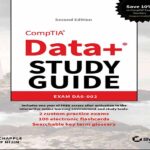


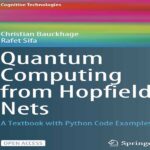


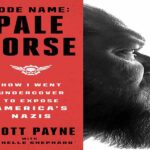
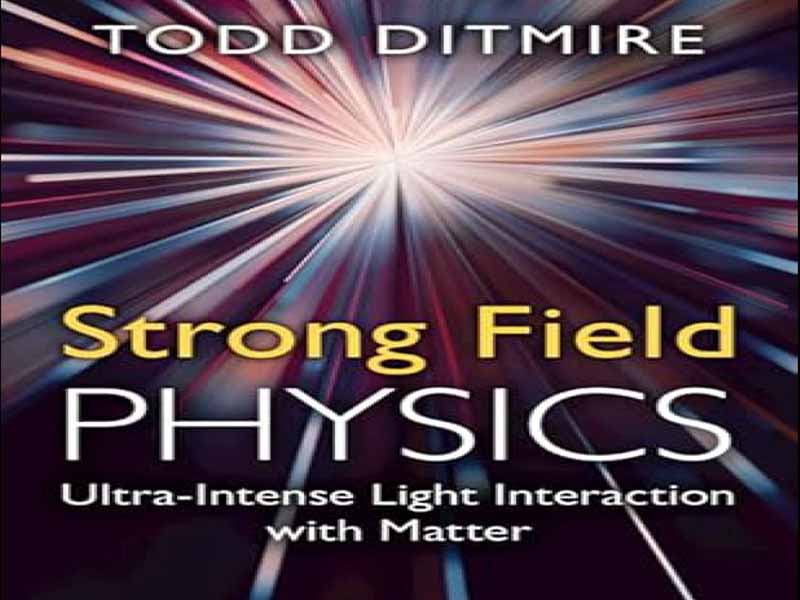






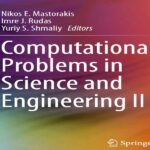


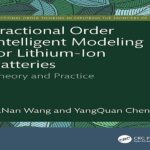
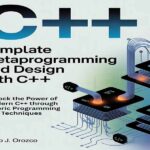









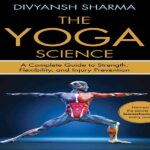
نظرات کاربران